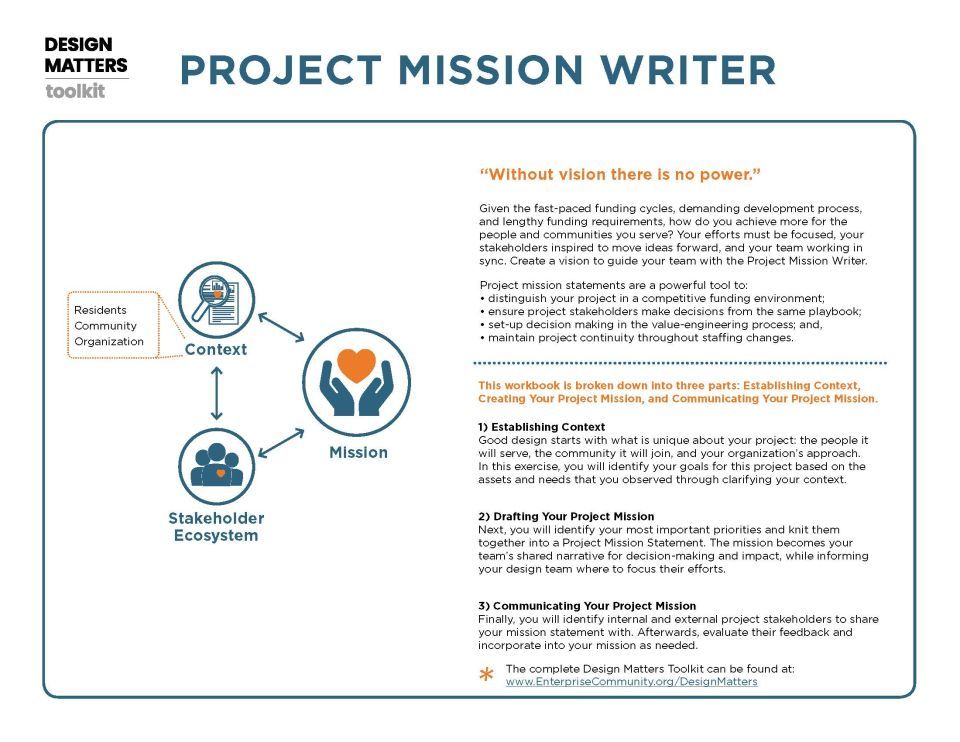Pictured: The Marion West by Low Income Housing Institute, Seattle
What development project manager wouldn’t want more tenacity, time and money for their projects, in addition to the ability to put forth applications that are captivating for funders and regulators? Research by Enterprise showed that early goal-setting around outcomes for residents and the community, or what we call here writing a project mission, creates pathways to all of these.
For nearly a year, Enterprise’s Design Team explored what allows development teams to maintain a project focus on resident and community outcomes, despite financial or regulatory constraints.
Of all the findings, one common practice stood out: projects that had set clear, specific, written goals at their beginnings, informed by local needs and assets, were better poised to remain committed to their desired resident and community impacts through value-engineering and into construction.
With this research in hand, Enterprise created a new tool– the Project Mission Writer – to support development teams in tackling this impact-multiplying step in the pre-development process.
Wondering if you need a Project Mission?
Here are four reasons to give it a try:
- A clear project vision fortifies your team for the hurdles that await. Amanda Loper of David Baker Architects shares that to get through the challenges inherent to affordable housing requires “sustained tenacity.” But how do you generate that? Create a clear focus to rally behind.
- Being clear saves you time. There is so much your building’s design could do to create positive impact on the people who will live there. In fact, far more than you can pursue! The hard part is choosing: Is this project about fostering community connections? Sparking economic development? Deciding on your focus early eliminates the time spent chasing after ideas that typically end up being value-engineered out later. Developing your goals at the beginning of predevelopment, when the cost of design and the time it takes to make changes are at their lowest, also allows you to work with your design team and be creative about different ways you might fulfill your targeted outcomes.
- Having a mission saves you money. Without transparent (written!) goals, development team members and vendors alike are bound to move in different directions. Each time one party makes an unaligned move, like adding features you didn’t want, it costs you money that otherwise could have been spent on your people-focused goals. When a clear mission is shared across project partners in advance, teams are better aligned in response to routine issues and more importantly, the big challenges.
- And finally, vision is irresistible. Having big ideas and knowing your project’s story makes you attractive to funders and more bulletproof for design review. Funders and officials have countless projects to review – if yours has a clear impact strategy, it puts it miles ahead of the rest, which may have spent more time on the project pro forma and less on thinking about their project’s “why?”.
Want to create projects that do more? Jim Rouse, Enterprise’s founder, summed it up best, “Bold visions are essential to fuel hope, energize capacity, extend reach to what best might be." What might be your project’s mission?

Enterprise’s Project Mission Writer tool is available for download from the Enterprise Design Matters toolkit.
